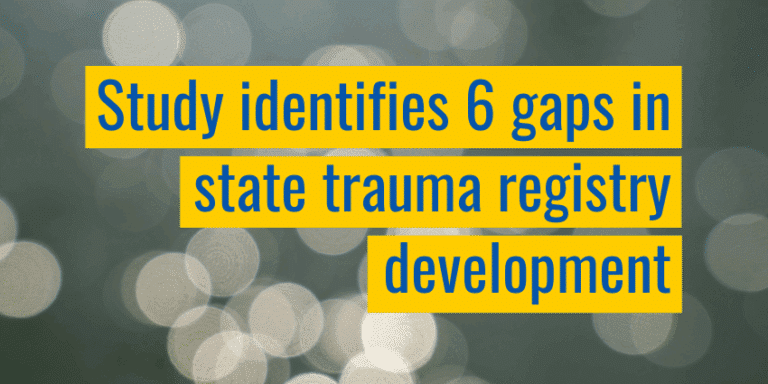A study has found that state trauma registries in the U.S. have developed significantly in the last two decades, but widespread gaps remain in registry infrastructure, data collection processes and quality assurance measures.
The results of the study were published as an article in press in Injury in August 2025: Status of state trauma registries 2025: Have we made progress?
In this study, researchers administered an electronic survey to state trauma registry leaders in all 50 states and the District of Columbia. The survey was based on a similar survey conducted in 2024, allowing researchers to assess both the current capabilities of state trauma registries and their development over the last 20 years.
Overall, the study found that the number of state trauma registries has increased significantly in the last two decades, from 32 (in 2004) to 47 (in 2024). In addition, of the four states that do not currently have a trauma registry, two states — Maine and Rhode Island — are in the process of developing one.
In spite of this growth, the study identified six prevalent gaps in state trauma registry infrastructure and processes.
1. Absence of comprehensive mandatory reporting
The study found that 43 states (91%) mandate data submission to the statewide trauma registry.
However, in 24 of these jurisdictions (51%), mandatory data submission applies only to designated trauma centers. Only 18 states (38%) require mandatory data submission from all acute care hospitals, including trauma centers.
The research team found that Texas has the most comprehensive reporting requirement in the U.S., mandating trauma data reports from all acute care hospitals (inclusive of trauma centers) and rehabilitation facilities.
2. Reliance on manual data entry
The researchers found that nearly three-quarters (72%) of state trauma registries rely on manual data abstraction. Only 10 jurisdictions (21%) take advantage of electronic abstraction capabilities.
3. Lack of EHR integration
The study also found that only 14 statewide trauma registries (30%) are integrated with electronic health records.
“Even in systems with partial EHR integration, manual abstraction remains necessary, particularly for Abbreviated Injury Scale (AIS) scoring,” the authors noted.
4. Lack of integration with national databases
The research team found that more than half of state trauma registries (55%) do not contribute trauma registry data to national databases.
“Although only 43% of states reported that their registry contributes data to national databases, this may underestimate the total volume of trauma data aggregated nationally, as many hospitals submit data directly to national registries such as the NTDB or TQIP,” the authors noted.
5. Low adoption of real-time data submission
“While the potential for real-time data submission exists, few registries have implemented such capabilities,” the authors noted.
Currently, only Hawaii and Maryland have implemented real-time data submission for their statewide trauma registries.
Among the other jurisdictions, submission frequency varies: “24 (51%) states report quarterly submissions, 13 (28 %) have variable submission schedules, and 7 (15%) submit data monthly.”
6. Variability in data quality assurance practices
The study found that 7 states (15%) do not have a formal process for auditing trauma data quality.
In addition, 4 states (9%) do not screen registry data for completeness, and 28 states (60%) reported that registry data “is not verified against original patient medical records”.

